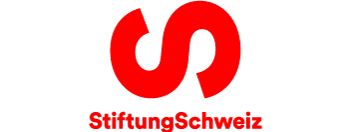Fundamental requirement: a complete specification of the mandate
The tender should be based on a detailed and complete specification of the asset management mandate. The first step is to convert your own investment strategy into a mandate strategy. The mandate specification process also includes defining a measurable benchmark for the mandate. Setting out the investment style is crucial: should the mandate be executed with an active management style focused on outperforming the benchmark, or with an index-oriented style aimed at investing assets in a tax-efficient and cost-effective way? Any sustainability criteria to be taken into account in the investments must also be specified when defining the investment style. Last but not least, it is crucial to specify the financial instruments: should the mandate be executed with direct investments, or through collective investments (e.g. funds, ETFs)? Collective investments offer various advantages, especially for assets of up to CHF 100 million. These include rapid diversification, cost and tax benefits, and clear and simple structuring of securities.
Competitive tender
To obtain the best asset management solution on the open market, at least three competitive bids must be obtained when putting the mandate out to tender. Based on the mandate specification, potential providers are given a structured questionnaire – known as a ‘request for proposal’ – with questions covering the essential requirements for the tender object. During the tender process, active asset managers are evaluated on the basis of five criteria, known as the ‘5 Ps’: performance, price, process, people and product characteristics. If a sustainable investment style is to be pursued, the desired sustainability criteria should be specifically addressed in the questionnaire.
Trend towards indexed mandate solutions
Among large institutional investors such as pension funds, there is a trend towards indexed, cost-effective and tax-efficient asset management. The indexing approach can be based on the weightings or the market capitalisation of the securities in the mandate, but it can also take sustainability criteria into account. Price is one of the most important considerations when weighing up different providers in tenders for indexed asset management mandates. It is therefore no surprise that the bidding process and pricing structure for indexed asset management are highly transparent and homogeneous compared to active asset management. Based on the mandate volume put out to tender, it is possible to accurately predict what the resulting pricing structure will look like. The intensively negotiated fees for mandates tendered by the independent consulting firm c‑alm AG from 2013 to 2022 are shown in the graph below.

Source: c‑alm, competitively negotiated fees of c‑alm since 2013 in basis points (1 basis point = 0.01%) of the volume (sliding-scale fee + TER product costs + VAT) for mixed asset management mandates executed with index funds.
However, conducting a comprehensive assessment of all the cost and tax components in asset management is tricky and requires relevant expertise: in addition to the asset management fees and the custodian fees, the product fees for the collective investments in the mandate are also important. The Total Expense Ratio (TER) shown for each collective investment can be used as an indicator. It is also important to check the switching or entry fees for the mandate. These can make a big difference, especially when transferring an existing investment set-up to a new asset management mandate. In such case, not only are investment fees incurred for the new mandate solution – so too are fees for selling the existing securities. These switching costs can be reduced significantly during the tender process by also considering in-kind contributions.
Last but not least: make or buy?
Independent consultancy firms like the author’s usually offer their tender expertise on a fee basis. The lump-sum consultancy fee can range from 15,000 to 30,000 Swiss francs, depending on the complexity of the mandate specification and the object of the tender. The larger the mandate volume, the more precise the mandate specification will be. And the more complex the transfer of securities from the existing setup to the new mandate, the more sense it makes to involve a consultant. For smaller mandate volumes of 0.5 to 30 million francs, the website www.economico.ch now offers a useful free tool for independently carrying out a transparent cost comparison of different, competitively priced asset management solutions. You can enter your individual investment strategy into this website, specifying your desired investment style (indexed or ESG), and then compare offers from various banks and asset managers.


